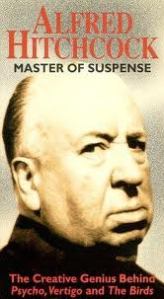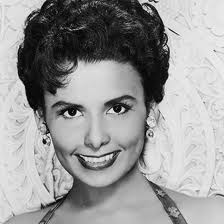It seems every time someone asks the question “What’s your favorite? (fill in the blank film) that’s what happens to me…BLANK; there are just too many. So, I decided to prep for the next occasion.
With the new film “La La Land” starring Ryan Gosling and Emma Stone being touted as this generation’s “Singing in the Rain”, I decided to start with the Musicals genre. These are some of my favorites that also made AFI’s list of the Top 5 Musicals of all time!


Can you name yours? Let’s share.
| # | FILM | YEAR | STUDIO |
| 1 | SINGIN’ IN THE RAIN | 1952 | MGM |
| 2 | WEST SIDE STORY | 1961 | United Artists |
| 3 | WIZARD OF OZ, THE | 1939 | MGM |
| 4 | SOUND OF MUSIC, THE | 1965 | Twentieth Century-Fox |
| 5 | CABARET | 1972 | Allied Artists |
Some of my favorite quotes!
Singin’ in the Rain (1952)
Lina: [with a voice to peel paint] And I cayn’t stand’im. Holy crap! This line makes the movie for me!!
This celebrated musical-comedy was directed and choreographed by Gene Kelly and Stanley Donen. Starring Kelly, Donald O’Connor, and Debbie Reynolds, it offers a lighthearted depiction of Hollywood in the late 1920s, with the three stars portraying performers caught up in the transition from silent films to “talkies.” (Wikipedia)

West Side Story (1961)
[singing]
Bernardo: “I’d like to go back to San Juan.”
Anita: “I know a boat you can get on!”
Ha! Bernardo, you do you, cause I’m gonna do me!
Ah, the Sharks and the Jets who turn a knife fight into the coolest, choreographed ballet I’ve ever seen. I also have a particular fondness for this film having performed in a community theater stage production.

Jets
A musical romantic drama directed by Robert Wise and Jerome Robbins, the film is an adaptation of the 1957 Broadway musical of the same name, which in turn was inspired by William Shakespeare’s play Romeo and Juliet. It stars Natalie Wood, Richard Beymer, Russ Tamblyn, Rita Moreno, and George Chakiris.
Nominated for 11 Academy Awards and winning 10, including Best Picture (as well as a special award for Robbins), “West Side Story” is the record-holder for the most wins for a movie musical. (Wikipedia)

The Wizard of Oz (1939)
Cowardly Lion: ” Alright I’ll go in there for Dorothy. Wicked Witch or no Wicked Witch, guards or no guards, I’ll tear them apart. I may not come out alive, but I’m going in there. There’s only one thing I want you fellows to do.”
Tin Woodsman, Scarecrow: “What’s that?”
Cowardly Lion: “Talk me out of it!”
Oh, Lion – you just gotta love him!
Produced by Metro-Goldwyn-Mayer, “The Wizard of Oz” is the most well-known and commercially successful adaptation based on the 1900 novel The Wonderful Wizard of Oz by L. Frank Baum. The classic stars Judy Garland as Dorothy Gale. The co-stars include Ray Bolger (The Scarecrow), Jack Haley (The Tin Man), Bert Lahr (The Cowardly Lion), Frank Morgan, Billie Burke, and Margaret Hamilton (The Wicked Witch of the West), with Charley Grapewin, Terry the dog (billed as Toto), and the Singer Midgets as the Munchkins.
Notable for its use of Technicolor, fantasy storytelling, musical score, and unusual characters, over the years, it has become an icon of American popular culture. It was nominated for six Academy Awards, including Best Picture, but lost to “Gone with the Wind”. It did win in two other categories, including Best Original Song for “Over the Rainbow” and Best Original Score by Herbert Stothart. (Wikipedia)

The Sound of Music (1965)
Maria: “When the Lord closes a door, somewhere He opens a window.”
Without a doubt, Maria! Amen!
This song by Christina Perri “A Thousand Years” isn’t from the film but I felt it perfectly reflected the relationship between Maria and the Captain.
“The Sound of Music” was produced and directed by Robert Wise, and starred Julie Andrews and Christopher Plummer. An adaptation of the 1959 Broadway musical The Sound of Music, composed by Richard Rodgers with lyrics by Oscar Hammerstein II it was based on the memoir The Story of the Trapp Family Singers by Maria von Trapp.

Cabaret (1972)
Sally: ” I’m going to be a great film star! That is if booze and sex don’t get me first.”
This is a very prophetic quote considering the fate of many a would-be star.
This stylish, socially conscious musical drama was directed by the legendary choreographer Bob Fosse and stars Liza Minnelli, Michael York. and Joel Grey. The setting is Berlin in 1931 with the Nazis’ violent rise serving as a powerful, ever-present undercurrent in the film.
Liza Minnelli won the Best Actress Award for her portrayal of the flamboyant, cabaret performer, Sally Bowles, with the film also garnering Academy Awards for Best Supporting Actor (Joel Grey), Best Cinematography, Best Art Direction, Best Sound, Best Original Song Score and Adaptation, and Best Film Editing. It holds the record for most Oscars earned by a film not honored for Best Picture. “The Godfather” took the prize. (Wikipedia)

Chicago (2002)
Although the stylized, Jazz Age hit “Chicago”(2002) didn’t make the AFI Top 5, (#12), I couldn’t omit this sizzling number, Cell Block Tango. “He had it comin'”☺☺
A film version of Chicago was to have been the next project for Bob Fosse, who had directed and choreographed the original 1975 Broadway production but he died before realizing his vision.
Fosse’s distinctive jazz choreography style is evident throughout and he is thanked in the credits. The movie explores the themes of celebrity, scandal, and corruption in Chicago during the Jazz Age. (Wikipedia)

Catherine Zeta-Jones, Richard Gere, Renée Zellweger
Starring Catherine Zeta-Jones, Renée Zellweger, and Richard Gere, “Chicago” centers on Velma Kelly (Zeta-Jones) and Roxie Hart (Zellweger), two murderesses who find themselves in jail together awaiting trial in 1920s Chicago.

Queen Latifah “Mama”
For her part, the multi-talented rapper, actress, producer, Queen Latifah’s role as Matron “Mama” Morton earned her a nomination for Best Supporting Actress. The movie was the winner of six Academy Awards in 2003, including Best Picture. The film was the first musical to win Best Picture since Oliver! in 1968.

There are definitely a lot more for the list so please, let me know some of your picks in the comments!



.jpg)






































